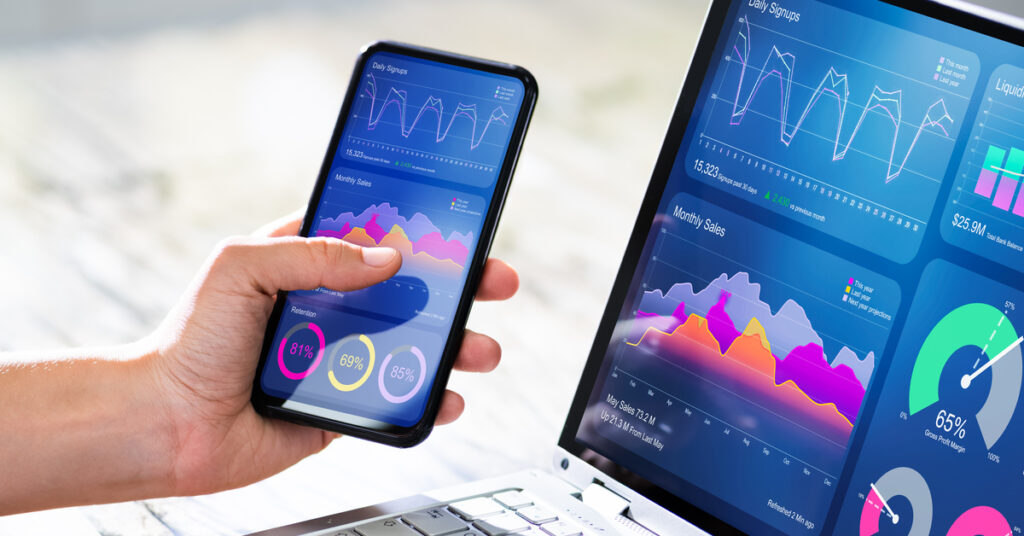Workforce Analytics provides insigths into the vast amount of data your HR technology (HCM, WFM, Payroll) creates every day. Employees clock on, and your workforce management system logs their hours. By way of example, in retail – an environment we are all familiar with – a staff member logs into their checkout and records every sale they make throughout their shift. The question is: how are you leveraging the data that surrounds these events to your best advantage?
The number or value of sales is contingent on any number of variables – foot traffic, seasonality or product availability, staff knowledge or coverage and engagement. If an employee makes significantly fewer sales in one shift when compared with their previous one, you may need to understand why. Was it because some high-demand products were out of stock? If that is the case, you might improve sales next time by reviewing your inventory and requesting more stock on that particular product. Was it because there were fewer customers? Perhaps understanding transactions by hour over a period is important, or understanding the impact of other external factors – such as weather or holidays may play a role.
Workforce analytics is the process of collecting and analysing such data to improve business outcomes. With it, you can continuously monitor employee engagement, staff and business performance, and turnover, both financial and employee-based, then make decisions to combat negative impacts on the business.
How workforce analytics tells a story with data
Employee productivity
Workforce analytics can collect and present time tracking, performance reviews, and attendance records to tell a story about employee productivity.
For example, workforce analytics may highlight that a particular department or employee has missed a key performance indicator (KPI). From there, you can examine why the person missed their KPI; it may have resulted from collaboration challenges or people not having the right knowledge or resources to meet the KPI. Such information allows you to identify employee performance and then decide if you need to make changes in your company or processes.
Productivity is not just about how many hours an employee works; it is also about the quality of their work and the outcomes they deliver. With workforce analytics, you can identify areas where employees struggle and need more support. You might compare their metrics with more productive employees to discover what makes them successful and leverage the findings to drive improvement initiatives.
Employee engagement
Workforce analytics enables you to identify employee engagement issues before they become major problems. It draws from data on why employee engagement might be normal or low. By tracking employee engagement data over time, organisations can identify patterns and trends that may provide insight into where, when and why employees have become disengaged.
Employees might disengage from their work if they feel like they have not received enough training or frequently need to work overtime. Workforce analytics tracks these areas and brings it to your attention if the person’s environment is a recipe for low engagement.
Then, workforce analytics can indicate if the person demonstrates disengaged behaviour such as not interacting on staff communication channels or frequently arriving late, leaving early or calling in sick. You can then leverage this information to address potential issues before they lead to decreased productivity or even staff turnover.
Employee turnover
Workforce analytics can identify factors that might cause employees to leave. By analysing employee data, such as job performance ratings, training history, and length of service, you can identify factors that indicate an employee might consider leaving. If the employee seems at risk of leaving the company, you can take proactive steps to retain them and resolve the issues that caused them to consider leaving and prevent them from impacting other people in future.
For example, a business may discover that employees who received low job performance ratings are more likely to leave within six months than those who received high ratings. The business could then provide additional training or mentoring for employees who received low ratings to improve their job performance and keep them from leaving. You might identify that employees have preferences for types of work or hours that can be managed to drive higher satisfaction and engagement.
Getting onboarding right, at the right time, can reduce employee turnover in the long term and ensure that your business is not left short-handed. Workforce analytics can help you get that crucial starting period right. With the help of data, businesses can identify which employees are likely to leave and why. Then, you can develop strategies to either reduce employee turnover or to handle attrition through targeting new candidates more proactively and with processes that get them up to speed quickly.

Real-time insights drive real-time benefits
Check the pulse of your business at any time
Traditional methods of gathering and reporting on workforce analytics occurred periodically and often created a lag between the data in the report and the company’s current reality. Modern workforce analytics software enables you to review your company’s performance at any given time and make decisions based on current data. You can respond to changes in the market or your workforce at a moment’s notice, even looking forward with predictive capabilities, which also helps you stay ahead of your competition.
Rather than asking the question, ‘what is our current capability mix?’ and then digging through historic data that points to potential problems, workforce analytics provides access to the latest metrics and insights so you can make decisions and solve potential problems, fast.
Workforce analytics does not only pull numbers from your systems. It also can also collate feedback from employees and the leadership team to help you keep your finger on the business’ pulse.
Address and fill skill gaps
Eighty-seven per cent of companies expect skill gaps within the next five years. Workforce analytics provides insights that allow you to understand the skill gaps in your workforce and how you can fill them. By identifying these gaps, you can then plan how to react, such as with targeted training or by hiring new employees with the desired skills.
Part of this starts in your hiring process by identifying high-demand skills and selecting candidates according to these requirements. You can determine which skills are necessary for particular positions and identify candidates who possess those skills. You can also use workforce analytics to assess the effectiveness of your training programs. By understanding which employees are acquiring skills, how quickly they are acquiring them and the work they are doing, you can make better business decisions.
Predict future changes and organisational needs
Workforce analytics examines past data to predict future demand and organisational needs. It determines how many resources you need to meet future changes and demands by analysing data on employee turnover, hiring, and promotion. This information can help you to better plan for the future and ensure you have the resources needed for success.
Workforce analytics also predicts the future needs of your organisation by forecasting customer demands. It analyses past data and trends to identify patterns and future changes. By doing this, you can ensure you have the resources in place to meet customer needs. For example, if workforce analytics predicts a rise in demand for a certain product, you can focus on ensuring you have enough staff and resources to handle the demand.

Tambla’s Workforce Analytics solution
Workforce analytics is a robust tool to keep in your workforce management toolbox. The right platform, tailored to your business, delivers actionable insights in real-time so you can make informed business decisions.
Our Workforce Analytics solution tells the story of your data via easy-to-understand, interactive dashboards. You can set it up to display only the metrics most relevant to your business and deliver it to the relevant people across the leadership team.
Visit our Workforce Analytics page to book a demo.




